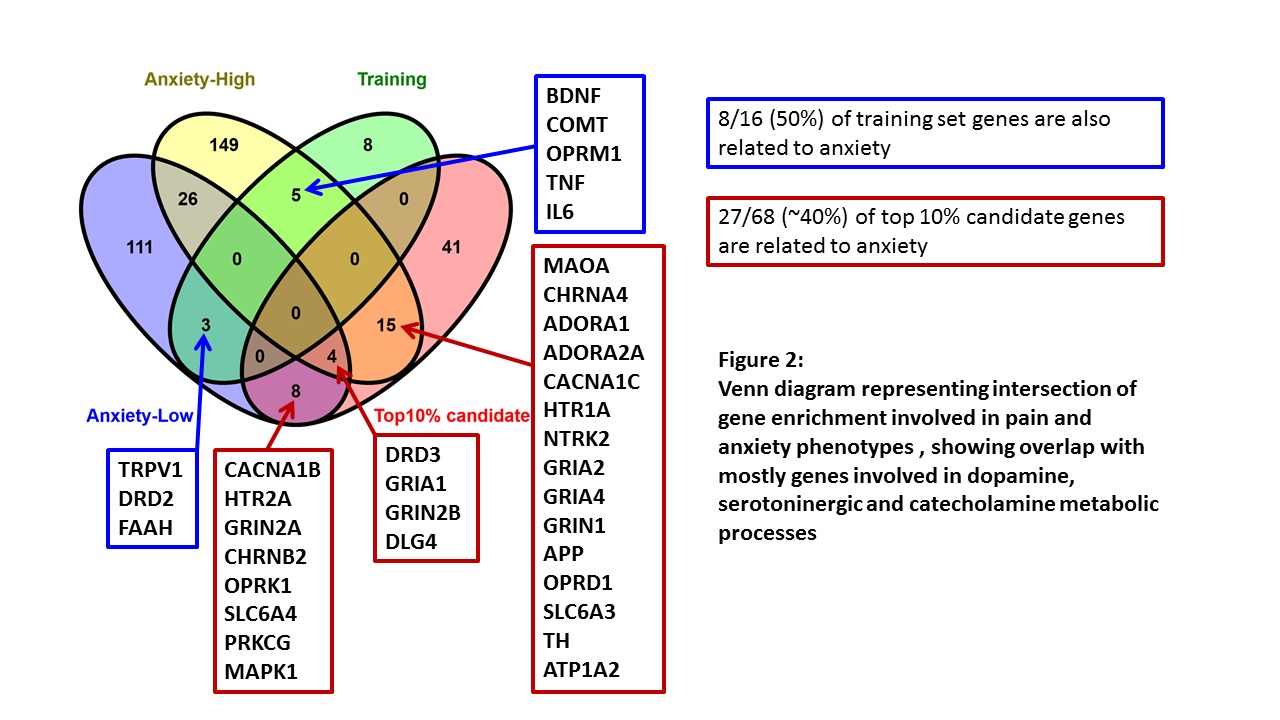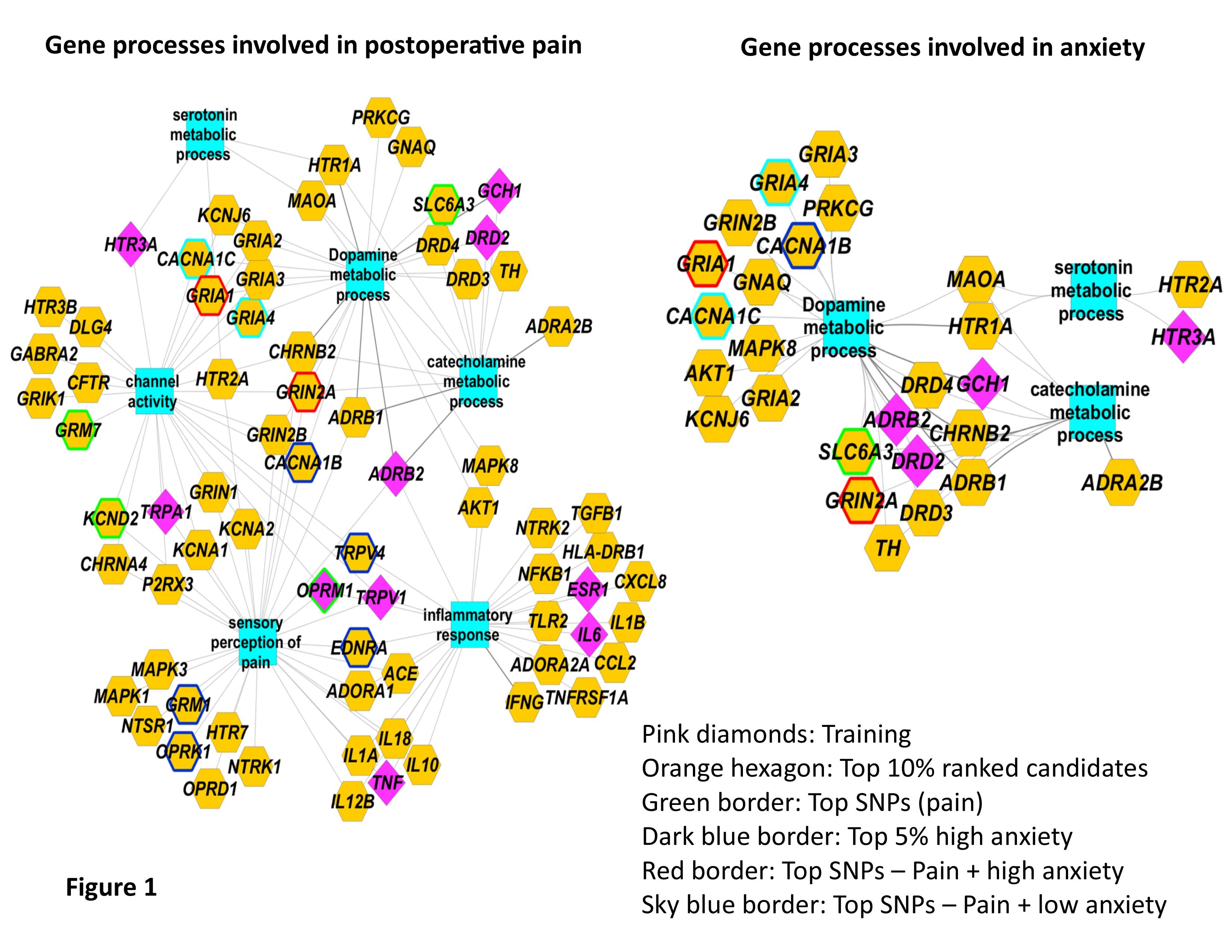PR1-159
Systems Biology Approach to Identifying Genetic Pathways Involved in Postoperative Pain and Anxiety
Chidambaran V, Martin L, Pilipenko V, Jegga A
Cincinnati Childrens Hospital, Cincinnati, OH, United states
Introduction
Pain and anxiety are heritable conditions, but identifying their genetic basis has been elusive due to a lack of replicability of genetic association studies1 and inconsistent results2. A systems biology approach integrates genetic-level data with biologic processes, pathways and networks thereby overcoming pitfalls of hypothesis-driven candidate association studies. While such pathway analyses have been conducted to study chronic pain conditions and traumatic brain injury, no study has used this methodology to study postoperative pain and anxiety. The goal of this study was to use systems biology to identify common genetic pathways shared by postoperative pain and anxiety.
Methods
A systematic review of literature (articles published between 01/01/1997 - 10/31/2017) was performed to identify genes associated with postoperative pain in humans. The identified genes were used to perform a systems biology-based integrative computational analysis using ToppGene Suite (www.toppgene.cchcm.org), a comprehensive platform for gene set enrichment analyses and machine learning based candidate gene ranking. We also compared genes associated with either decreased or increased anxiety- related response (Mouse phenotype – knockout studies), and did a pathway enrichment analysis using the specific gene sets. We then analyzed intersection of pain genes with anxiety genes to identify common processes.
Results
Systematic review for postoperative pain identified a training set of 16 genes. We compiled a set of ~680 candidate pain genes based on functional similarity using a variety of gene annotations, which were then ranked using the training set. The top 10% of the ranked list (68 genes) and training set together were used for enrichment. Significant enrichment (p-value 0.05; Bonferroni correction) was found for biologic processes such as inflammatory response, cytokine activity, sensory perception, channel activity, sleep, dopamine, serotonin and catecholamine (DSC) metabolic processes (Figure 1). For anxiety, we found 122 genes associated with low anxiety, 169 with high anxiety and 30 genes with both low and high anxiety (Fig 1). We found 40- 50% overlap among the genes enriched in pain and anxiety (Fig 2). The common genes are mostly involved in the DSC pathways.
Conclusion
Using a systems biology-based approach, we identified DSC biological processes to be common to both postoperative pain and anxiety. This information can guide future research and focus for individualization of pain management using non-opioid therapies.
References:
1. Kim H et. al. J Pain 2009;10(7):663-93.
2. Mogil JS. Proc Natl Acad Sci USA 1999;96(14):7744-51.
Top













